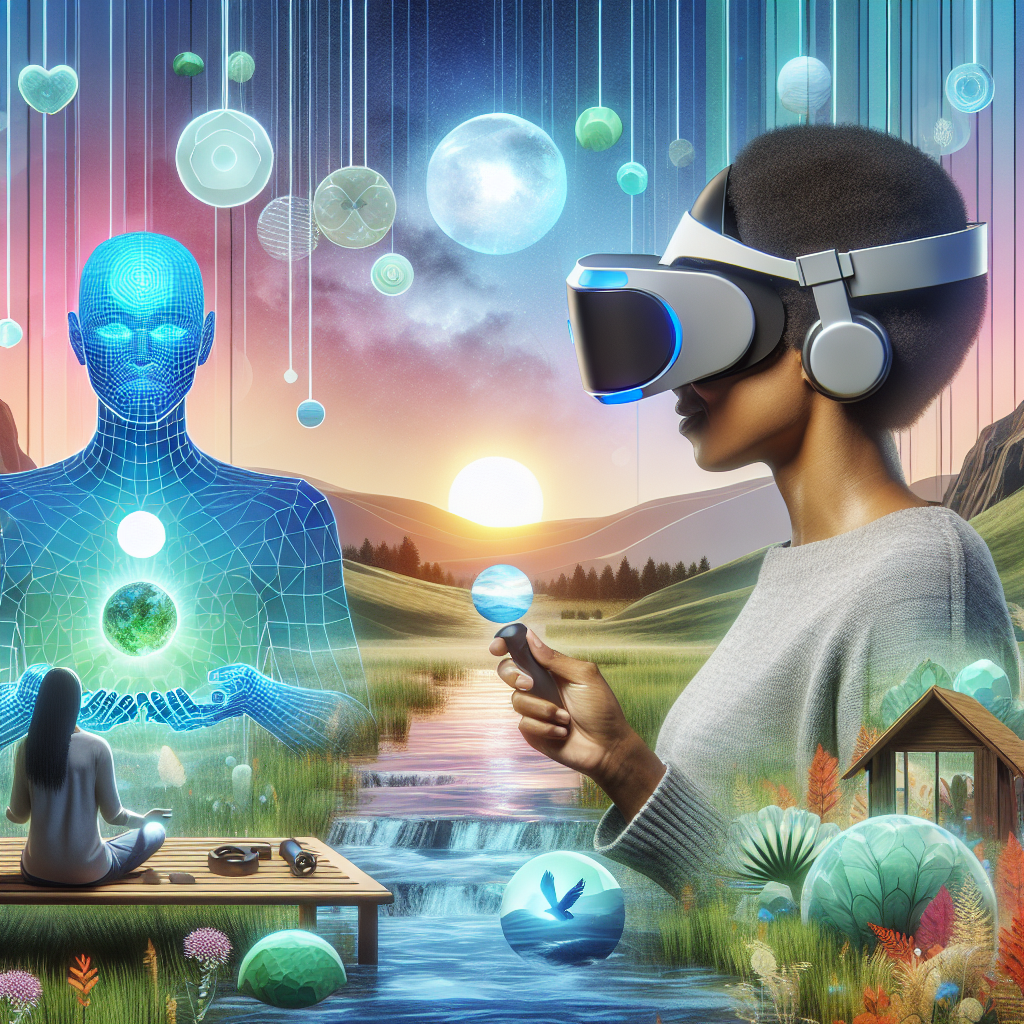Virtual reality (VR) technology has made significant advancements in recent years, with applications ranging from entertainment to education to healthcare. One area where VR shows immense promise is in revolutionizing mental health therapy.
Mental health disorders, such as anxiety, depression, PTSD, and phobias, affect millions of people worldwide. Traditional therapy methods, such as talk therapy and medication, have proven effective for many individuals. However, there are still many barriers to accessing mental health treatment, including cost, stigma, and limited availability of trained therapists.
Enter virtual reality therapy. VR therapy involves using immersive technology to create virtual environments that simulate real-life scenarios. Patients can then interact with these environments through specialized headsets and controllers, allowing them to confront their fears and practice coping skills in a safe and controlled setting.
The potential benefits of VR therapy for mental health are vast. For individuals with phobias, VR can provide exposure therapy in a controlled environment, allowing them to confront their fears gradually and safely. For those with PTSD, VR can recreate traumatic events in a therapeutic setting, helping them process and cope with their trauma. And for individuals with anxiety or depression, VR can offer relaxation exercises, mindfulness practices, and coping strategies in a virtual world.
Research studies have shown promising results for the effectiveness of VR therapy in treating a variety of mental health disorders. A meta-analysis published in the Journal of Anxiety Disorders found that VR exposure therapy was as effective as in vivo exposure therapy for treating specific phobias. Another study published in the Journal of Clinical Psychology found that VR therapy was effective in reducing symptoms of depression and anxiety in individuals with anxiety disorders.
In addition to its clinical effectiveness, VR therapy also offers several practical advantages over traditional therapy methods. Virtual reality technology is becoming more accessible and affordable, making it easier for mental health professionals to integrate VR into their practice. VR therapy can also be delivered remotely, allowing patients to access treatment from the comfort of their own homes. And because VR therapy can be tailored to each individual’s needs and preferences, it has the potential to be more engaging and motivating than traditional therapy methods.
Despite its promise, VR therapy is still a relatively new and evolving field. There are several challenges and limitations that need to be addressed before VR therapy can become a standard treatment option for mental health disorders. These include concerns about the safety and efficacy of VR technology, the need for more rigorous research studies, and the importance of ensuring that VR therapy is accessible to all individuals, regardless of socioeconomic status or geographic location.
To help address some common questions and concerns about VR therapy for mental health, below is a list of frequently asked questions:
FAQs:
1. Is VR therapy safe?
VR therapy is generally considered safe when used under the supervision of a trained mental health professional. However, like any form of therapy, there are risks and potential side effects to consider. Individuals with certain medical conditions, such as epilepsy or heart problems, may not be suitable candidates for VR therapy. It is important to discuss any concerns with a qualified therapist before starting VR therapy.
2. How effective is VR therapy compared to traditional therapy?
Research studies have shown promising results for the effectiveness of VR therapy in treating a variety of mental health disorders. However, more research is needed to compare the effectiveness of VR therapy to traditional therapy methods. It is important to consult with a mental health professional to determine the best treatment approach for your specific needs.
3. Can anyone use VR therapy?
VR therapy can be used by individuals of all ages, but certain populations may benefit more than others. For example, individuals with specific phobias, PTSD, anxiety disorders, or depression may find VR therapy particularly helpful. It is important to discuss your mental health concerns with a qualified therapist to determine if VR therapy is the right treatment option for you.
4. How can I access VR therapy?
VR therapy is becoming more accessible and affordable, but it may not be available in all mental health settings. It is important to seek out mental health professionals who are trained in using VR therapy and have experience working with individuals with mental health disorders. You can also inquire with your insurance provider to see if VR therapy is covered under your plan.
5. What are the limitations of VR therapy?
While VR therapy shows promise in revolutionizing mental health treatment, there are still several limitations to consider. These include the cost of VR technology, the need for trained therapists to deliver VR therapy, and concerns about privacy and data security. It is important to weigh the benefits and limitations of VR therapy with a qualified mental health professional before starting treatment.
In conclusion, virtual reality therapy has the potential to revolutionize mental health treatment by providing innovative and effective interventions for individuals with a variety of mental health disorders. While there are challenges and limitations to consider, the promising results of research studies and the practical advantages of VR therapy make it a promising option for the future of mental health care. By continuing to invest in research, training, and accessibility, we can unlock the full potential of virtual reality in transforming mental health therapy.
